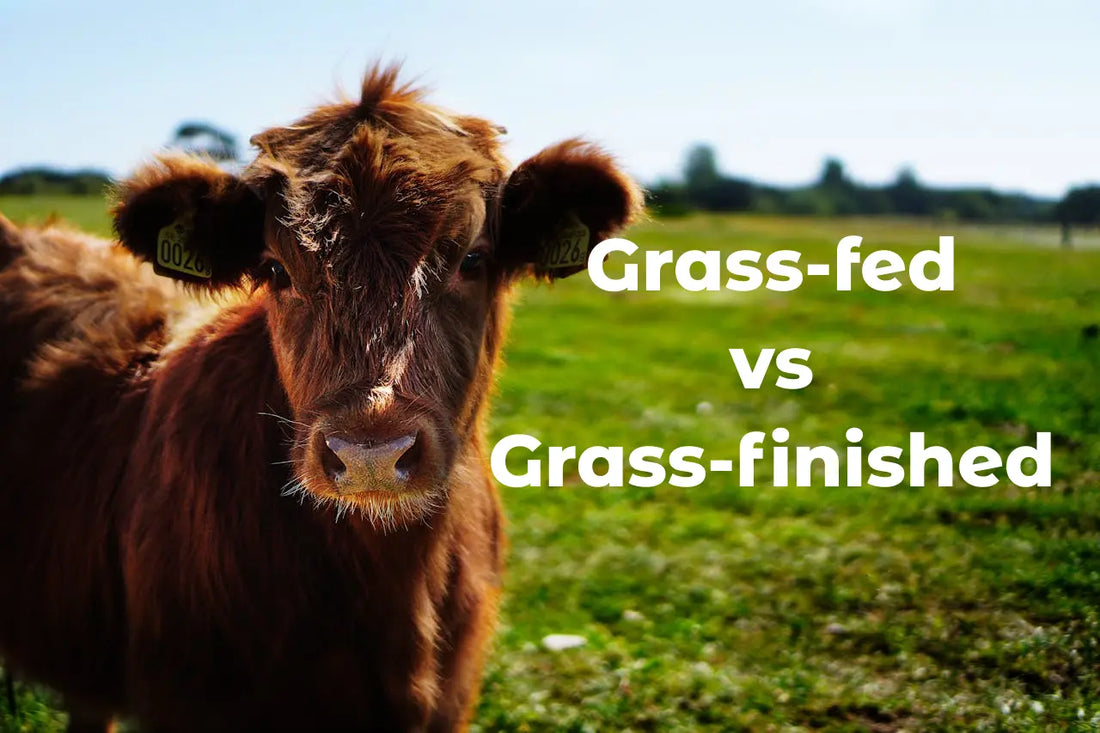When it comes to choosing beef, many consumers are increasingly concerned about not only the quality of the meat but also how it was produced.
Terms like "grass-fed" and "grass-finished" are often used, but there's a lot of confusion about what these labels actually mean. While they might sound similar, the distinctions are important for those looking to make informed dietary choices.
In this post, we'll break down the differences between grass-fed and grass-finished beef and explore the benefits of a grass-only diet for cattle.
Grass-Fed Beef: A Common Misconception
The term "grass-fed" beef has become a popular marketing label, but it doesn't always mean what consumers think. According to USDA regulations, beef labeled as "grass-fed" must come from cattle that have been fed grass and forage for the duration of their life, with the exception of milk prior to weaning. However, this definition allows for some loopholes.
In reality, many cattle are raised on grass but are "finished" on a grain-based diet. This means that while they start their life on pasture, they are moved to feedlots and fed grains like corn or soy in the months leading up to slaughter. This grain-finishing process helps cattle gain weight more quickly, leading to a different texture and flavor profile in the meat.
Grass-Finished Beef: A Commitment to Grass
Grass-finished beef, on the other hand, comes from cattle that have been fed grass or forage for their entire lives. This type of beef is often more expensive and harder to find because it requires a greater commitment from the farmer and a longer time to raise the cattle to market weight.
The main distinction here is that grass-finished cattle never consume grain. They live on pasture and are allowed to graze naturally, which is more aligned with their natural diet.
Why the Difference Matters
Understanding the difference between these two types of beef is important for several reasons:
- Nutritional Profile: Grass-finished beef typically contains higher levels of certain nutrients compared to grain-finished beef. It tends to have more omega-3 fatty acids, which are beneficial for heart health, as well as higher levels of antioxidants like vitamin E.
- Taste and Texture: The diet of the cattle affects the taste and texture of the meat. Grass-finished beef has a distinct, often leaner taste compared to the richer, fattier flavor of grain-finished beef. Some consumers prefer the taste of grass-finished beef, finding it more flavorful and representative of traditional beef.
- Animal Welfare: Grass-finished beef production is often more humane. Cattle are allowed to graze freely and exhibit natural behaviors, which is a stark contrast to the crowded and often stressful conditions of feedlots.
The Benefits of a Grass-Only Diet for Cattle
Feeding cattle grass their entire lives has several significant benefits, both for the animals and for the consumers:
- Healthier Cattle: Cattle naturally thrive on a grass diet. Grain-based diets, while efficient for weight gain, can lead to health problems in cattle, including digestive issues and a higher incidence of diseases that require antibiotic treatments.
- Environmental Impact: Grass-fed and grass-finished systems can be more sustainable. Pasture-based systems promote biodiversity, soil health, and carbon sequestration. Conversely, grain production often involves intensive agriculture practices that can deplete soil nutrients and contribute to erosion and pollution.
- Consumer Health: As mentioned earlier, grass-finished beef offers a superior nutritional profile. The higher levels of omega-3 fatty acids, CLA (conjugated linoleic acid), and antioxidants can contribute to a healthier diet.
The Harms of Grain Feeding
While grain feeding can efficiently produce marbled, flavorful beef, it comes with several downsides:
- Digestive Health Issues: Grain diets can cause acidosis in cattle, a condition where the stomach becomes overly acidic, leading to discomfort and illness. This often necessitates the use of antibiotics, contributing to the growing issue of antibiotic resistance.
- Increased Fat Content: Grain-fed beef typically has a higher fat content, which can be less healthy for consumers looking to reduce saturated fat intake.
- Environmental Concerns: The production of grains for cattle feed involves significant use of resources, including water, fertilizer, and pesticides. This not only impacts the environment but also increases the carbon footprint of beef production.
Conclusion
Choosing between grass-fed and grass-finished beef can be confusing, but understanding the differences is key to making an informed decision. Grass-finished beef, with its commitment to an all-grass diet, offers a range of benefits from improved animal welfare to better nutritional profiles and environmental sustainability. While it may come at a higher price, the benefits to both health and the planet make it a worthy consideration for those prioritizing quality and ethical food choices.
In summary, while "grass-fed" may sound appealing, ensuring that your beef is also "grass-finished" can make a significant difference in the quality and ethicality of the meat you consume.

